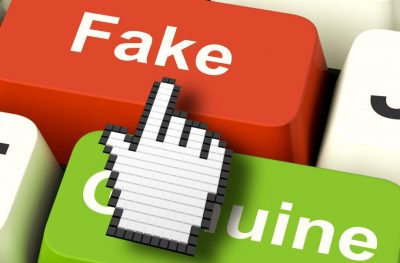This News Is Not Fake. It is just Ordinary Deceit, i.e. a Lie

Any scanning of the headlines both in standard and critical postings, especially since the 2016 US elections, will suffice. In the interest of brevity, reference is made to almost any pages published concurrent with this remark.
Now “Fake”, e.g. “fake news” seems to be the slogan of the year. This is bizarre considering that most if not all so-called “news” is fabricated, i.e. “fake”.That means it does not tell anything except what the controlling editors (and ultimately the owners) want to have said (2). The ostensible event need not even have occurred.
In the echo chambers of the “Left” everyone accuses the Establishment– to which they are the logical complement– of spreading “fake” news. This implies that there is “news” spread which is not fake, i.e. perhaps “true”, a word to be treated with the greatest of caution.
Fowler(3) would certainly have called this “vogue” language. Propaganda (or public relations/ advertising) does not acquire more substance, nor is there more precision in the fashionable term, “fake news”.
Simply sticking to the essence: fake news is just another term, a euphemism, for “lie” circulated by one or more elements of the mass media. Thus the lie loses the quality of active deceit. Moreover the wide adoption of this vogue language marks any user as someone “up to date”, part of the herd or swarm that reports about the reporting, while propagating the specious claim that journalism is something other than the commercial exploitation of voyeuristic or solipsistic text and image production.(4)
What does “fake” mean? Does the “news” lacks authenticity? Is the underlying event not genuine? Is the source false or fraudulent? Is the dissemination itself fraudulent? Were that the case, then the mere repetition of the “fake” is collaboration in the fraud, witting or unwitting. Is the opposite of “fake” real? And if so what does that mean: A real fabrication as opposed to a fake one? Although I do not have an attribution (but do not claim one), I recall reading somewhere in a discussion of counterfeiting luxury brands that the owners of the “genuine brand” actually benefit from the counterfeiting because it perpetuates the brand mystique and the quest for the real article among all the “fakes”.
Journalistic “truth”, despite all the raving about free press (i.e. free markets) and integrity, is a luxury product, a commodity, like any other. The more “news” sold but denounced as “fake”, the higher the value of the luxury brands whose “truth” need not be questioned. One of the principal qualities of any commodity is its ultimate and infinite substitutability. Maybe the problem is that all “news” is fodder for consumption, an activity by itself very different from thinking.
Notes
1) See George Creel, How We Advertised America (1920).
2) The newspapers of record in most countries are private property and always have been, the holy New York Times, the blessed Washington Post, the venerable (once Manchester) Guardian, just to name the most notorious. It is a testimony to the superficiality of critical thought in much of what passes for political opposition that there is a presumption of truth applied to commercial product of monopoly media, no matter how often this presumption has been rebutted. People engaged by these corporations are bound by contract to obey their employers, just like in any other employment relationship. Ironically for monopoly commercial media bona fide lies (in compliance with corporate policy) are usually protected by law and academic scholarship. A back page correction is sufficient to indemnify the publisher or the source/ informant for the lie.
3) H. Fowler, Modern English Usage
4) Joseph Pulitzer’s campaign to “professionalize” public information, e.g. with the tax-exempting bequest funding the first journalism schools at the University of Missouri (1908) and Columbia University (1912) and the eponymous prize (1917), was foremost an effort to create a cadre of writers who could be employed interchangeably to generate text product for the great newspaper cartels. It was also intended to marginalise the partisan writer (usually from somewhere Left) and discredit him/ her as biased and unprofessional. In the so-called Progressive Era of US history (late 19th century), licensed professions were created– e.g. physicians and dentists– ostensibly rooted in modern scientific training but more accurately in monopolistic and anti-democratic political and economic practices. So today’s medical profession is essentially the sales/ marketing department of the chemical/ pharmaceutical cartels. Professionalisation can be translated as “profitization”.
*
Note to readers: please click the share buttons above. Forward this article to your email lists. Crosspost on your blog site, internet forums. etc.
Dr T.P. Wilkinson writes, teaches History and English, directs theatre and coaches cricket between the cradles of Heine and Saramago. He is also the author of Church Clothes, Land, Mission and the End of Apartheid in South Africa. Read other articles by T.P.. He is a frequent contributor to Global Research.

